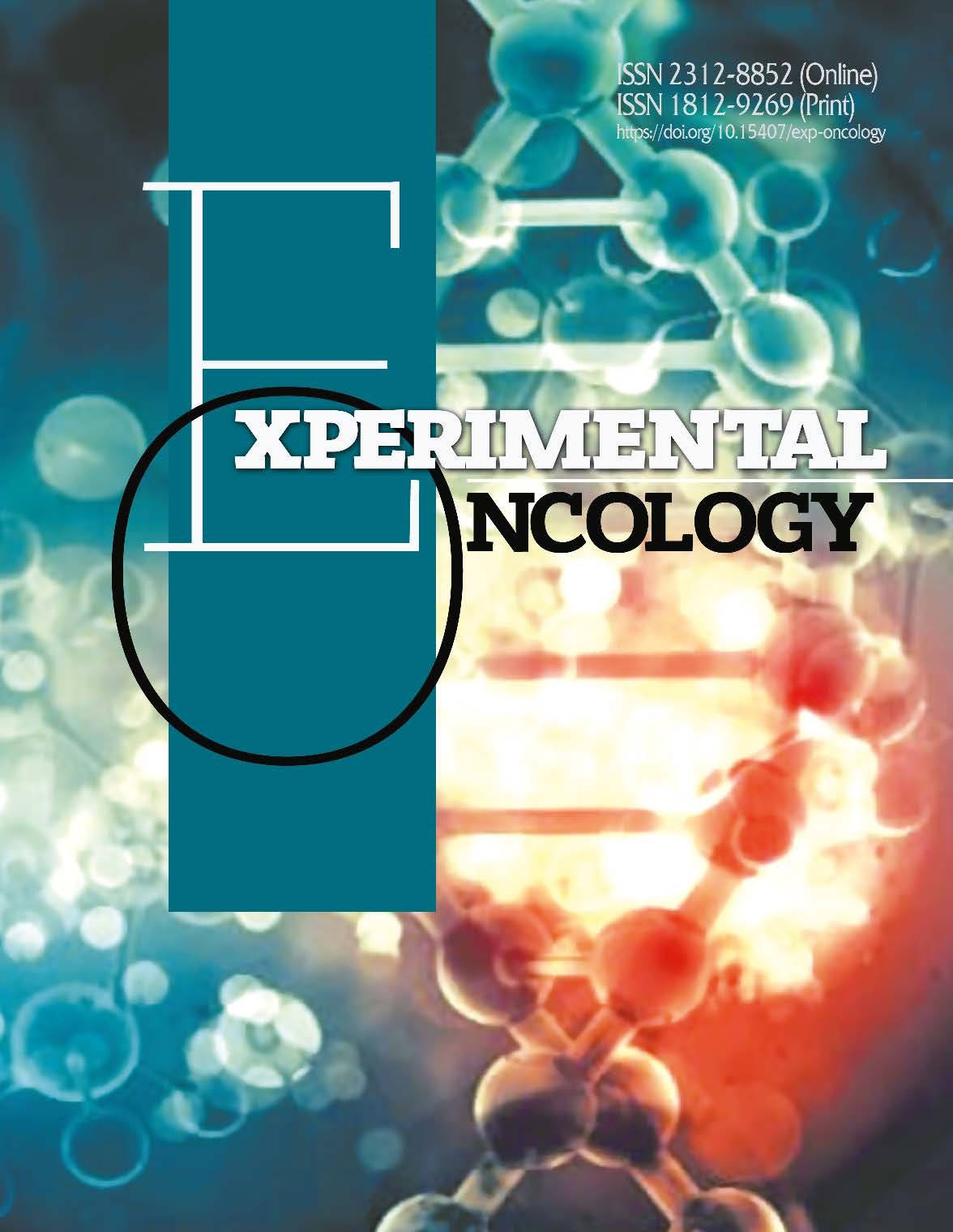SOLUBLE CD150 ISOFORM LEVEL IN PLASMA OF CHRONIC LYMPHOCYTIC LEUKEMIA PATIENTS
DOI:
https://doi.org/10.15407/exp-oncology.2023.04.457Keywords:
soluble CD150, isoform, plasma, chronic lymphocytic leukemiaAbstract
Background. SLAMF1/CD150 is an active player in B cell signaling networks in chronic lymphocytic leukemia (CLL). CD150-mediated signaling initiates through a homophilic CD150 binding, which spans the adjacent cells, or the interaction with the soluble CD150 isoform (sCD150). The expression of sCD150 isoform at the mRNA and protein levels ex vivo was confirmed. However, it is unclear whether sCD150 isoform present in the blood plasma of CLL patients is a factor in the constitutive activation of CD150+ cells. The aim of this study was to develop an ELISA assay for the specific sCD150 evaluation and assess the sCD150 levels in the blood plasma of CLL patients with different CD150 expression on B cells. Materials and Methods. Blood plasma samples and peripheral blood mononuclear cells from 40 previously untreated CLL patients were analyzed. An ELISA method, ex vivo drug sensitivity assay, and a cell viability assay were used. Results. The sCD150 isoform was found in all studied plasma samples of CLL patients at different levels regardless of the cell surface CD150 expression status of B cells and sCD150 mRNA expression. CLL cases with low levels of the cell surface CD150 expression in B cells are characterized by high levels of sCD150 in blood plasma in contrast to the CLL cases with high cell surface CD150 expression on B cells. The elevated levels of sCD150 in blood plasma are associated with a better sensitivity of malignant B cells to cyclophosphamide and bendamustine. Conclusions. The sCD150 isoform is actively secreted by CLL B cells with its accumulation in blood plasma, which may be regarded as an additional factor in the CLL clinicopathologic variability.
References
Gordiienko I, Shlapatska L, Kholodniuk V, et al. The interplay of CD150 and CD180 receptor pathways contribute to the pathobiology of chronic lymphocytic leukemia B cells by selective inhibition of Akt and MAPK signaling. PLoS One. 2017;12(10):e0185940. https://doi.org/10.1371/journal.pone.0185940
Bologna C, Buonincontri R, Serra S, et al. SLAMF1 regulation of chemotaxis and autophagy determines CLL pa- tient response. J Clin Invest. 2016;126(1):181-194. https://doi.org/10.1172/JCI83013
Punnonen J, Cocks BG, Carballido JM, et al. Soluble and membrane-bound forms of signaling lymphocytic ac- tivation molecule (SLAM) induce proliferation and Ig synthesis by activated human B lymphocytes. J Exp Med. 1997;185(6):993-1004. https://doi.org/10.1084/jem.185.6.993
Wei Y, Lee J, Dziegelewski M, et al. Determination of the SLAMF1 self-association affinity constant with sedimentation velocity ultracentrifugation. Anal Biochem. 2021;633:114410. https://doi.org/10.1016/j.ab.2021.114410
Cocks BG, Chang CC, Carballido JM, etal. Anovelreceptorinvolvedin T-cellactivation. Nature. 1995;376(6537):260–263. https://doi.org/10.1038/376260a0
Shcherbina V, Gordiienko I, Shlapatska L, et al. Sensitivity of chronic lymphocytic leukemia cells to chemotherapeutic drugs ex vivo depends on expression status of cell surface receptors. Exp Oncol. 2020;42(1):16-24. https://doi.org/10.32471/exp-oncology.2312-8852.vol-42-no-1.14093
Kruse M, Meinl E, Henning G, et al. Signaling lymphocytic activation molecule is expressed on mature CD83+ dendritic cells and is up-regulated by IL-1 beta. J Immunol. 2001;167(4):1989-1995. https://doi.org/10.4049/jim-munol.167.4.1989
Yurchenko MY, Kashuba EV, Shlapatska LM, et al. The role of CD150-SH2D1A association in CD150 signaling in Hodgkin's lymphoma cell lines. Exp Oncol. 2005;27(1):24-30.
Isomäki P, Aversa G, Chang CC, et al. Expression of soluble human signaling lymphocytic activation molecule in vivo. Allergy Clin Immunol. 1999;103(1Pt1):114-118. https://doi.org/10.1016/s0091-6749(99)70534-8
Downloads
Published
How to Cite
Issue
Section
License
Copyright (c) 2024 Experimental Oncology

This work is licensed under a Creative Commons Attribution-NonCommercial 4.0 International License.



